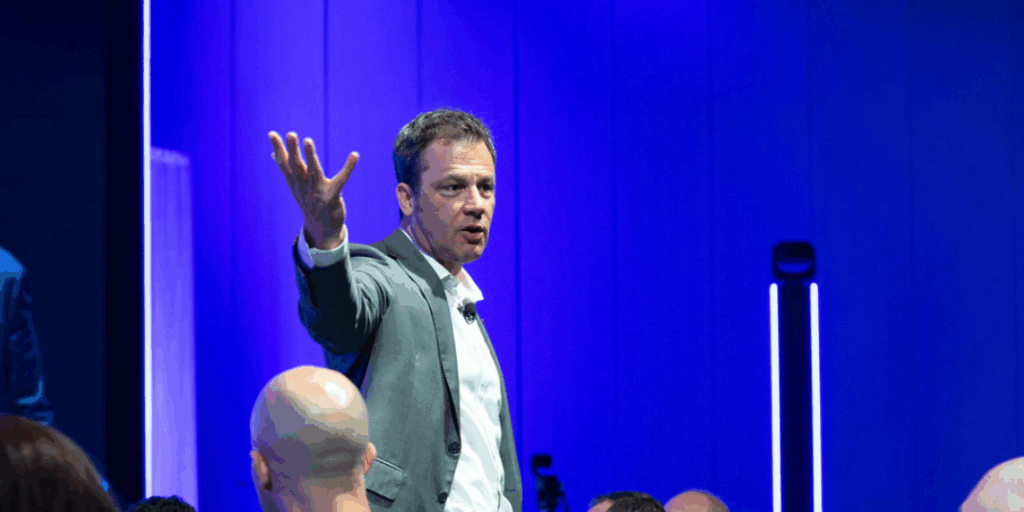I was walking up the steps of the Phoenician and walked right into Chris Clement, executive vice president of sales for Arch MI, a leading mortgage insurance provider with more than 1,000 employees. Chris was greeting his producers at registration, and I was arriving to help Chris open his 2018 sales kickoff. I was surprised to see him outside that evening but was grateful for the opportunity to spend some time talking prior to getting the party started the next morning.
Chris has been building sales teams in the mortgage industry for 30 years, and has seen major changes in both the industry itself and in the expectations of customers. 2017 was no exception. When AIG completed the $3.4 billion sale of its mortgage guaranty unit to Arch Capital Group last January, it meant Chris was facing a year of instability that comes with a significant integration.
That kind of change can be a tremendous challenge for any customer-facing/client-service organization in such a competitive category. But behind Chris’ leadership the Arch MI team passed the test with flying colors and today is extremely well-positioned to grow. It was a privilege to share the stage with such a passionate, purpose-driven sales leader like Chris during his final SKO. He’s retiring in 2018, but I was smart enough to connect with him post-conference to capture a few more golden nuggets of sales leadership insight before he heads off into the sunset. Check out a few highlights from our conversation here.
You’ve been working in sales for 30 years. What’s the biggest change you’ve noticed?
I think the sales role has evolved a lot. Now it’s all about how to utilize data and develop your subject-matter expertise. It’s become much more scientific than perhaps it used to be. I think there is such a thing as the science of selling, and for years now we have tried to educate our salespeople on how to develop those skills to be the best customer advocate they can be.
It’s consultative selling, and the only way you can do that is if you understand your customer’s business. To do that you have to educate yourself, and that’s why we spend a lot of time and resources on professional development.
The mortgage business has had a rocky couple of decades, but you’ve stuck with the industry. How did you make it through that turbulence?
It was a tough time, but I knew that I was going to do everything I could to bring the company through to the other side. The main thing I was focused on was keeping customer relationships and keeping our salespeople. I thought, “How do we help everyone navigate this so we come out the other side intact and come back stronger than ever?” Which is exactly what we did.
How did you keep people motivated during such a tough time?
It was all about giving people very specific goals. To some extent it was about being a cheerleader: “You’re still with the best company out there. We’re going to get through this. We have faith in you, so I’m going to apply some resources.”
People in sales took a financial hit but we tried to support them as best we could. The message I emphasized was that we’re still part of a huge company, that we’re going to come through this stronger and better than ever.
A lot of it was being visible. One of our mantras is visibility. It’s not just being visible with your customers; it’s being visible with your sales team. You have to instill some degree of faith and confidence in them that this is going to work out.
What do you see coming in the future? How do salespeople need to prepare now?
What did they say about Wayne Gretzky? That he always knew where the puck was going to be. I think that’s the thing — how do we think about up-and-coming trends and get ahead of that curve and get ready for it? How is the model going to change? How is the industry going to change? How do we deal with making homeownership affordable? How is technology going to change? All those things are around the corner, and so we need to think about how we prepare for that.
My kids are 28 and 30, and they will buy a house differently than I did. I don’t know if any one of them has ever dealt with a bank teller. So the question is how do we structure ourselves and develop products and services to meet their needs — not the needs of folks like me.
Our lenders have to adapt. The lending community has to adapt because they’re going to sell differently to millennials, and we have to be prepared for that, for the products and services that banks offer millennials. We have to align with that.
Have those changing customer expectations also shifted the way you recruit?
It’s still a relationship business. Relationships are hugely important. I just think that they’re developed and fostered differently than they were years ago.
We’re constantly trying to think of ways to bring in talent that can relate with the millennial population. When we hire people, we consider how well they understand technology. How well do they use social media? All of that stuff goes into the mix.
Some of our stars, regardless of their age, really know how to use social media. They’re all over LinkedIn, they’re all over Facebook, they’re all over communicating with their customers that way versus the old-fashioned way that I did, which was calling them on the telephone.
—
I couldn’t agree more. Relationships are still the most important element of selling — but where and how we develop those relationships has dramatically shifted. Whether you’re selling mortgage insurance, NBA Basketball or technology solutions, the old rules no longer apply.
Today’s top performers constantly experiment, and are simply more prepared to meet customers where they are. It’s always worth considering: “How can I get closer to my customer?”
The answer to that question will most assuredly drive sales growth and is a topic I will be exploring here in the future.


![[RE] Featured Image - Sales Growth Strategies A group of employees walking up the stairs while chatting in a concrete office building](https://ryanestis.com/wp-content/uploads/bb-plugin/cache/RE-Featured-Image-Sales-Growth-Strategies-1024x538-panorama-2f257ae51c972272de1c7aed28b01877-.png)
![[RYAN] Featured Image - Sales Manager Skills A person in a business suit shaking hands with a colleague](https://ryanestis.com/wp-content/uploads/bb-plugin/cache/RYAN-Featured-Image-Sales-Manager-Skills-1024x538-panorama-a9e7a83da9a5ca4e1d38b36e87492f06-.png)
![[RYAN] Featured Image - Consultative Sales Approach [RYAN] Featured Image - Consultative Sales Approach](https://ryanestis.com/wp-content/uploads/bb-plugin/cache/RYAN-Featured-Image-Consultative-Sales-Approach-1024x538-panorama-42c09bf12887088a921116094d899f06-.png)
![[RYAN] Featured Image - Sales Tactics [RYAN] Featured Image - Sales Tactics](https://ryanestis.com/wp-content/uploads/bb-plugin/cache/RYAN-Featured-Image-Sales-Tactics-1024x538-panorama-81064ac25e005c4d692a589e275c338f-.png)




